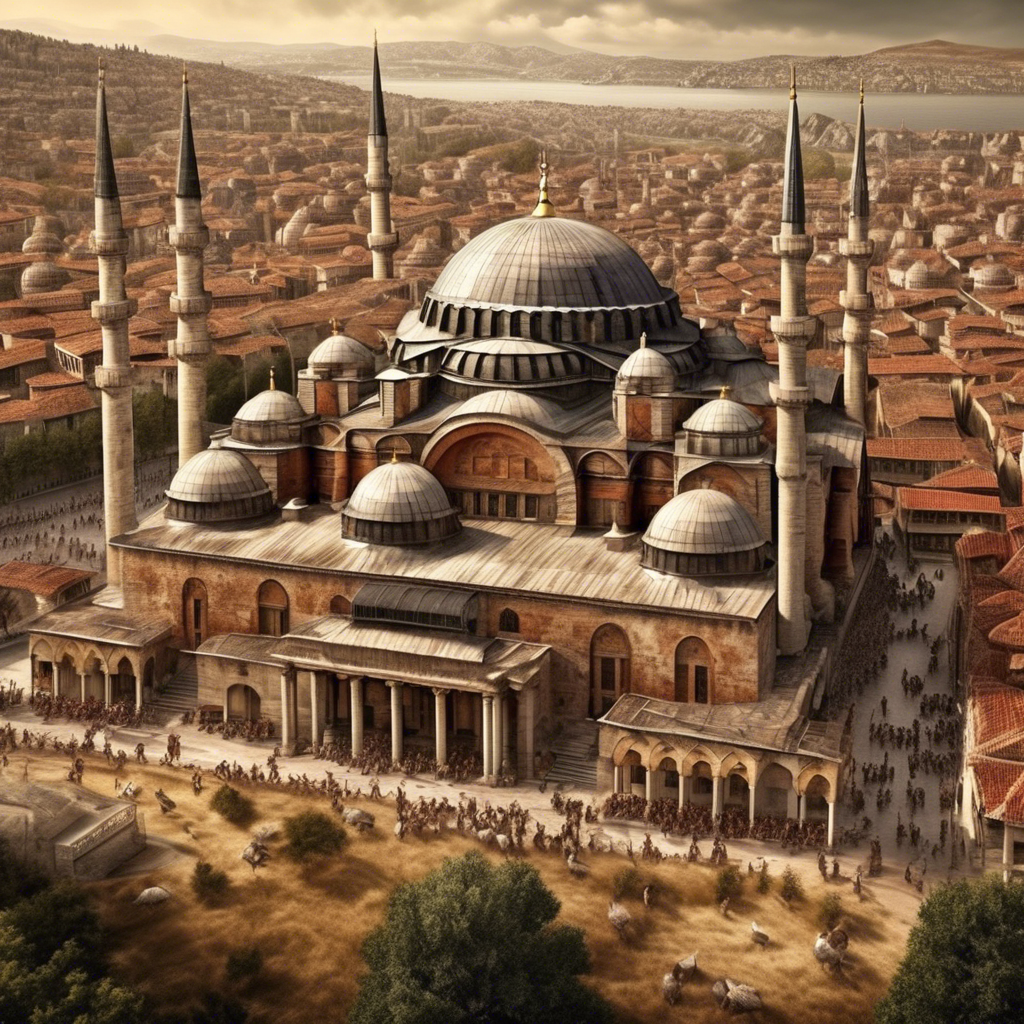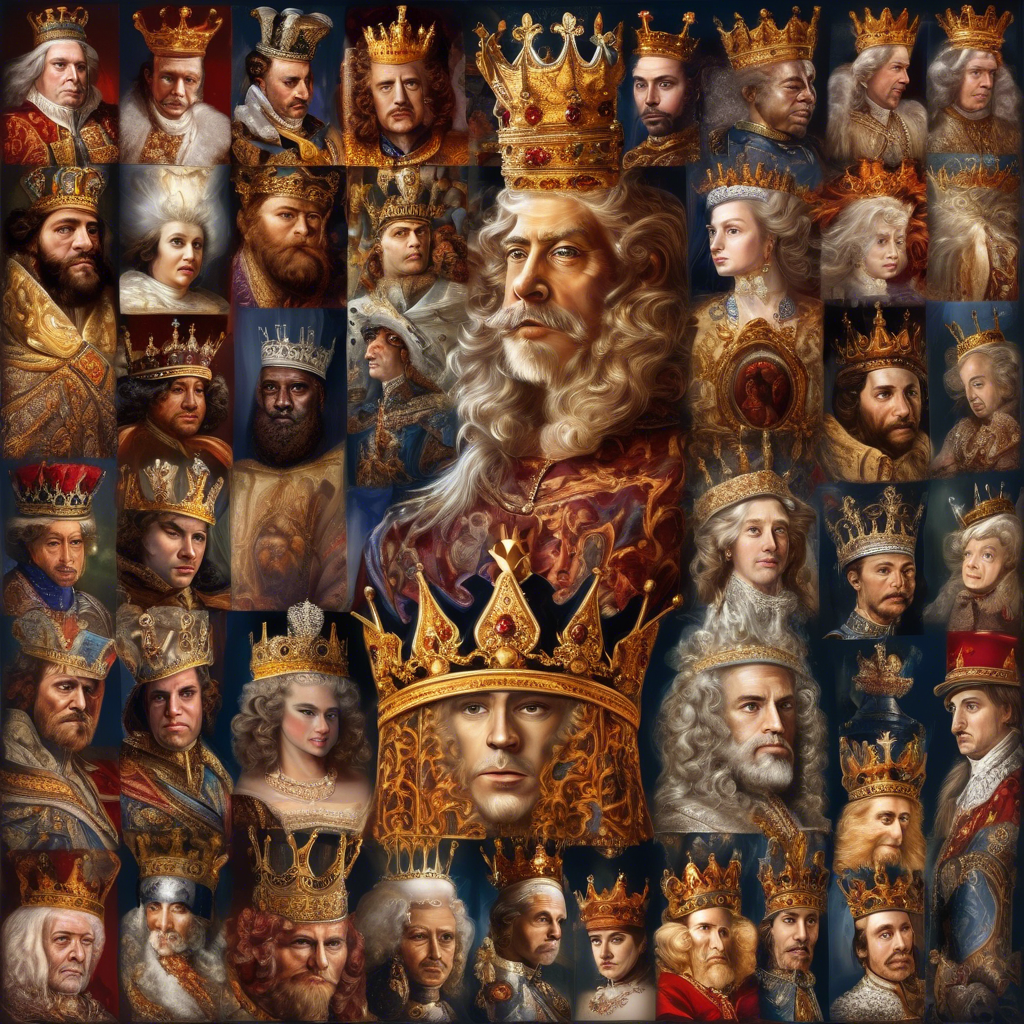
I. Introduction
Importance of Studying the History of Turkey
Studying the history of Turkey is essential for understanding the complex interplay of cultures, religions, and political developments that have influenced the region over millennia. By examining Turkey’s past, we gain insights into the roots of its contemporary challenges, achievements, and identity as a bridge between East and West, offering a nuanced perspective on its role in global history.
II. Ancient Civilizations in Anatolia
Neolithic Period and the First Settlements
Anatolia, known as the cradle of civilizations, witnessed the emergence of early settlements during the Neolithic period, where agriculture and urbanization laid the foundation for complex societies. The fertile lands of Anatolia attracted diverse populations, leading to the development of advanced agricultural practices, trade networks, and cultural exchanges that shaped the region’s identity.
Hittite Empire
The Hittite Empire emerged as a dominant power in Anatolia during the Bronze Age, establishing a formidable state with advanced military technologies, diplomatic relations, and administrative structures. The Hittites left a lasting legacy through their legal codes, religious practices, and architectural achievements, influencing later civilizations in Anatolia and beyond.
Phrygians, Lydians, and Urartians
Successive civilizations, including the Phrygians, Lydians, and Urartians, contributed to the cultural mosaic of Anatolia, each leaving distinctive marks on the region’s history. The Phrygians excelled in craftsmanship and mythology, the Lydians in commerce and wealth, and the Urartians in fortifications and military prowess, showcasing the diversity and complexity of Anatolian civilizations.
Greek and Roman Influence in Anatolia
Greek and Roman civilizations exerted significant influence on Anatolia through conquests, colonization, and cultural assimilation. The Greek city-states and the Roman Empire established thriving urban centers, trade routes, and artistic traditions in Anatolia, blending local Anatolian customs with Hellenistic and Roman influences to create a vibrant cultural landscape.
III. Byzantine Empire and the Rise of the Ottoman Empire
Byzantine Rule in Anatolia
The Byzantine Empire maintained control over Anatolia for centuries, preserving Roman traditions, Christian heritage, and administrative structures in the region. Byzantine rule in Anatolia faced challenges from external invasions, internal strife, and religious conflicts, setting the stage for the rise of new powers in the region.
Seljuk Turks and the Battle of Manzikert
The Seljuk Turks, a nomadic Turkic tribe, emerged as a formidable force in Anatolia, challenging Byzantine authority and expanding their territories through military campaigns. The pivotal Battle of Manzikert in 1071 marked the Seljuk victory over the Byzantine Empire, leading to the Turkish conquest of Anatolia and the establishment of Turkic principalities in the region.
Rise of the Ottoman Empire under Osman I
Osman I, the founder of the Ottoman dynasty, laid the foundations of the Ottoman Empire in the early 14th century, consolidating power, expanding territories, and establishing a centralized state in Anatolia. The Ottoman Empire emerged as a dominant force in the region, blending Turkic, Islamic, and Byzantine influences to create a multicultural and multi-faith society.
Conquest of Constantinople by Mehmed the Conqueror
Mehmed the Conqueror’s conquest of Constantinople in 1453 marked the end of the Byzantine Empire and the beginning of a new chapter in Anatolian history. The fall of Constantinople transformed the city into the Ottoman capital, Istanbul, symbolizing the Ottoman Empire’s rise as a global power and a center of cultural and political influence.
IV. Ottoman Empire: Expansion and Decline
Golden Age of the Ottoman Empire
The Ottoman Empire reached its zenith during the 16th and 17th centuries, known as the Golden Age, characterized by territorial expansion, cultural flourishing, and economic prosperity. Ottoman sultans like Suleiman the Magnificent implemented reforms, patronized the arts, and established a powerful military, consolidating the empire’s influence in Europe, Asia, and Africa.
Suleiman the Magnificent and the Peak of Ottoman Power
Suleiman the Magnificent, also known as Suleiman I, was a renowned Ottoman ruler who led the empire to its peak of power and influence. Under Suleiman’s reign, the Ottoman Empire expanded its territories, implemented legal and administrative reforms, and fostered a vibrant cultural scene, earning Suleiman the epithet of “the Lawgiver” and “the Magnificent.”
Decline of the Ottoman Empire and Reforms under Tanzimat
The decline of the Ottoman Empire in the 18th and 19th centuries was marked by internal strife, territorial losses, and challenges from European powers. The Tanzimat reforms introduced in the mid-19th century aimed to modernize the empire, promote equality, and strengthen governance, but internal resistance, external pressures, and nationalist movements hastened the empire’s decline.
Young Turk Revolution and the End of the Ottoman Empire
The Young Turk Revolution of 1908 signaled the culmination of discontent within the Ottoman Empire, leading to the overthrow of Sultan Abdulhamid II and the establishment of a constitutional government. The outbreak of World War I and the subsequent partition of the empire by European powers marked the end of the Ottoman era, paving the way for a new chapter in Turkish history.
V. Turkish War of Independence and the Establishment of the Republic
Mustafa Kemal Atatürk and the Turkish War of Independence
Mustafa Kemal Atatürk, a visionary leader and military strategist, spearheaded the Turkish War of Independence against foreign occupation and domestic challenges. Atatürk’s leadership, strategic acumen, and commitment to national sovereignty inspired the Turkish people to resist external threats and establish a unified, independent Turkish state.
Treaty of Lausanne and the Establishment of the Republic of Turkey
The Treaty of Lausanne, signed in 1923, recognized the sovereignty of the newly established Republic of Turkey and defined its borders, securing Turkey’s independence and territorial integrity. The establishment of the republic under Atatürk’s leadership heralded a new era of modernization, secularism, and democratic governance in Turkey.
Atatürk’s Reforms and Modernization of Turkey
Atatürk’s reforms, known as Kemalism, aimed to modernize Turkish society, economy, and governance by introducing secularism, legal reforms, education initiatives, and cultural revitalization. Atatürk’s vision of a modern, Western-oriented Turkey laid the foundation for the country’s transformation into a republican democracy and a secular state.
VI. Modern Turkey: Politics, Society, and Culture
Democratization and Military Coups
Modern Turkey has experienced a complex interplay of democratization efforts and military interventions, with periodic coups shaping the country’s political landscape. Military coups in 1960, 1971, and 1980 disrupted democratic processes, while subsequent reforms aimed to strengthen civilian rule, protect human rights, and enhance political stability in Turkey.
Turkey’s Role in International Politics
Turkey’s strategic location at the crossroads of Europe, Asia, and the Middle East has positioned it as a key player in international politics, diplomacy, and security affairs. Turkey’s membership in NATO, its aspirations for EU accession, and its involvement in regional conflicts underscore its geopolitical significance and influence on global affairs.
Economic Development and Challenges
Turkey’s economic development has witnessed rapid growth, industrialization, and urbanization, transforming the country into a major emerging market and regional economic power. However, economic challenges such as inflation, unemployment, income inequality, and political instability pose hurdles to sustainable development and inclusive growth in Turkey.
Cultural Heritage and Diversity in Turkey
Turkey’s rich cultural heritage reflects a tapestry of traditions, languages, religions, and customs that have evolved over centuries of interactions among diverse communities. From Anatolian civilizations to Ottoman legacy, from Islamic heritage to secular modernity, Turkey’s cultural diversity and artistic expressions contribute to its dynamic identity and global appeal.
VII. Conclusion
Summary of Key Points
The history of Turkey, from ancient civilizations to the modern republic, reveals a complex narrative of continuity and change, resilience and transformation, unity and diversity. Key historical events, rulers, and movements have shaped Turkey’s identity, values, and aspirations, laying the foundation for its present and future trajectories.
Significance of Turkey’s History in Shaping its Present and Future
Turkey’s history serves as a roadmap for understanding the challenges, opportunities, and potentials that define the country’s contemporary dynamics. By acknowledging its historical legacy, Turkey can navigate complex issues, forge inclusive identities, and chart a course toward a prosperous, peaceful future rooted in its diverse heritage and shared values.
Suggestions for Further Research
Exploring untapped aspects of Turkey’s history, engaging with marginalized voices, and delving into interdisciplinary perspectives can enrich our understanding of Turkey’s past and present realities. Further research on specific periods, regions, or themes can deepen our insights into Turkey’s multifaceted history and its enduring relevance in global contexts.



Leave a Reply